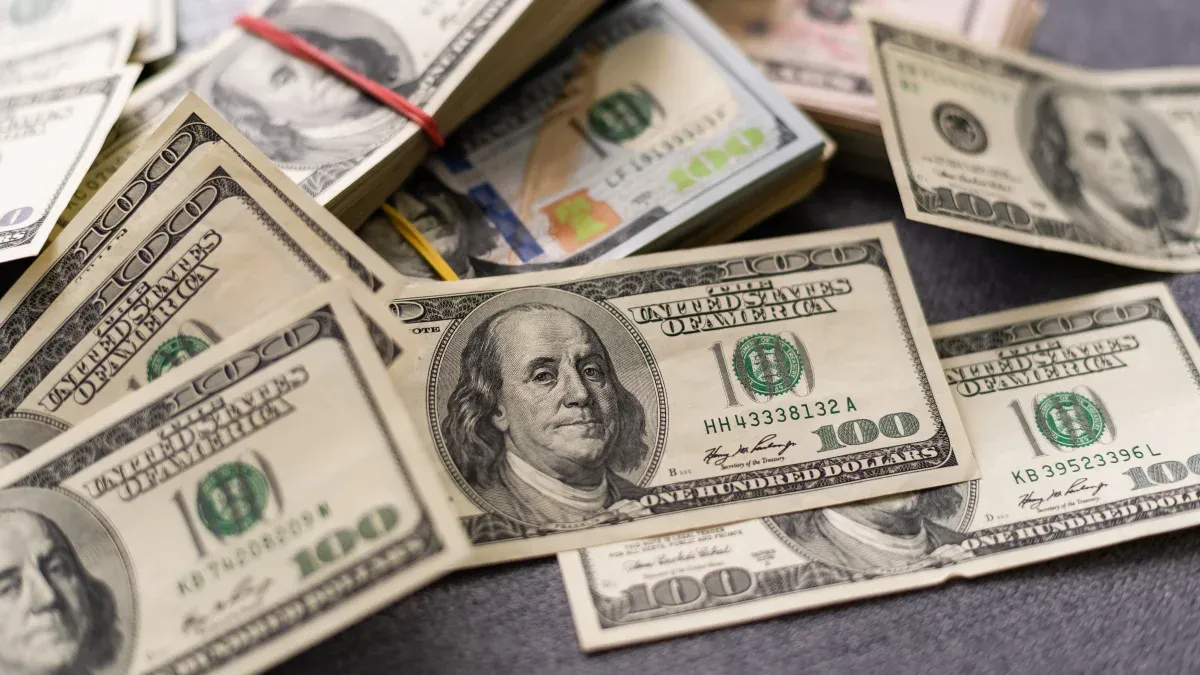He Dolar blue rose $10 this Monday, January 15 and closed at $1,130 for salewas located just $20 off the all-time nominal record of $1,150which reached last January 10 and the doubt is If the blue will continue to rise and what will happen to the gap.
The daily rise of blue dollar was mildof just 0.89%, but marks the continuity of a trend that started last week, when it climbed $95 in five days. That widened the price difference with the official exchange ratewhich jumped to 38%, after having been around 23% for several days and that is a key indicator that the market follows.
The rhythm of the official dollar, key for the blue
This will deepen if the official exchange rate does not tend to seek to compensate inflation of the past period. And, as stated by the economist Christian Buteler“the dollar is just another price of the economy” and that is why, if it remains artificially frozen, as has been happening, The parallels, which have no controls, will tend to rise.
And, as pointed out by economist Pablo Ferrarithe main element that puts pressure on the blue gap is that “a flat official exchange rate, which had a sharp jump from the initial 118% with a crawling peg that goes to 2%, far behind inflation”. Note that there is already one expectation of a new devaluationbut in the meantime, the official exchange rate will be delayed and that affects the dynamics of the blue and the parallels.
In fact, this is evident in the dynamics of financial dollars, the MEP and the Cash With Settlement (CCL) of late, which saw very strong jumps in the first week of the year, in which both exceeded $1,100although they then moderated the bullish momentum in the second seven days and remained around that value.
Financial dollar pushes upwards
Part of that rise is seen reflected in the rise of the last few days in the blue, given that both markets arbitrate. And, this Monday, the financiers started rising again: both climbed around $28, so that the dollar stock market stood at $1,125 and the CCL at $1,164. That is one of the indicators that the market reads as an advance of a possible rise of the blue going forward.
This is what the economist puts it Salvador Vitelli, of Romano Group, who points out to this medium that “we must mainly analyze the evolution of the CCL to follow what happens in the parallel exchange rates due to the volume that this market handles and its link with the official dollar as a result of the 80%/20% scheme”.
In that sense, he anticipates that, with the most negative real fixed-term rate since the 1990s in monthly terms (it is at 9% against 25% inflation) and a demand for pesos that begins to fall in February With the end of the holidays, investors tend to go towards the dollar. In this context, he expects the gap to reheat, which will show “some upward volatility.”
The negative fixed term rate leaves pesos free
Buteler hopes the same, who points out that, “with prices traveling at 25% monthly, rates at 9% (110% annually) and taking into account that the dollar is another price within the economywhich shows increases in all items, I think that the parallels will continue to have an upward trend,” anticipates Buteler.
Added to these elements, according to his vision, a monetary issue that does not let upwhich leaves more pesos in the available space (since they are no longer going to go to the fixed term) and that can put pressure on the blue and the financiers.
While, for the economist Federico Glusteinthe main element that puts upward pressure is the uncertainty generated in the market by the lack of definition in many aspects of the Government. “It is seen that, as the monetary issue continues without reducing, without being able to resolve the inflationary escalation and as it fails to advance with the omnibus law, upward pressure is generated on financial dollars.
What’s coming for the blue dollar
The market makes it clear that It is not satisfied with the discourse of “we are the pro-market Government,” he describes, but is guided by what it does.”, he points out. Under these conditions, regardless of whether it eventually draws the occasional saw, as it did a few days ago, with the announcement of the agreement with the Monetary Fund (IMF), as Buteler points out, “it is likely that there could be an upward trend going forward.” .
Lupieri agrees with this view by pointing out that “The price of the bue reflects the investor mood both with respect to the progress of the local economy and its own speculations. and, despite a favorable start for Milei, it will increase in price as long as no more base changes are made.”
To which Glustein adds that, since The gap grows as there is a lack of fundamental changes in the macroeconomyboth in monetary matters and in public spending, “it is likely that we will see an upward trend in the blue in the coming weeks”, at least, until the dollars from the harvest begin to enter, a phenomenon that usually begins to occur between March and April.
Source: Ambito
I am a 24-year-old writer and journalist who has been working in the news industry for the past two years. I write primarily about market news, so if you’re looking for insights into what’s going on in the stock market or economic indicators, you’ve come to the right place. I also dabble in writing articles on lifestyle trends and pop culture news.




